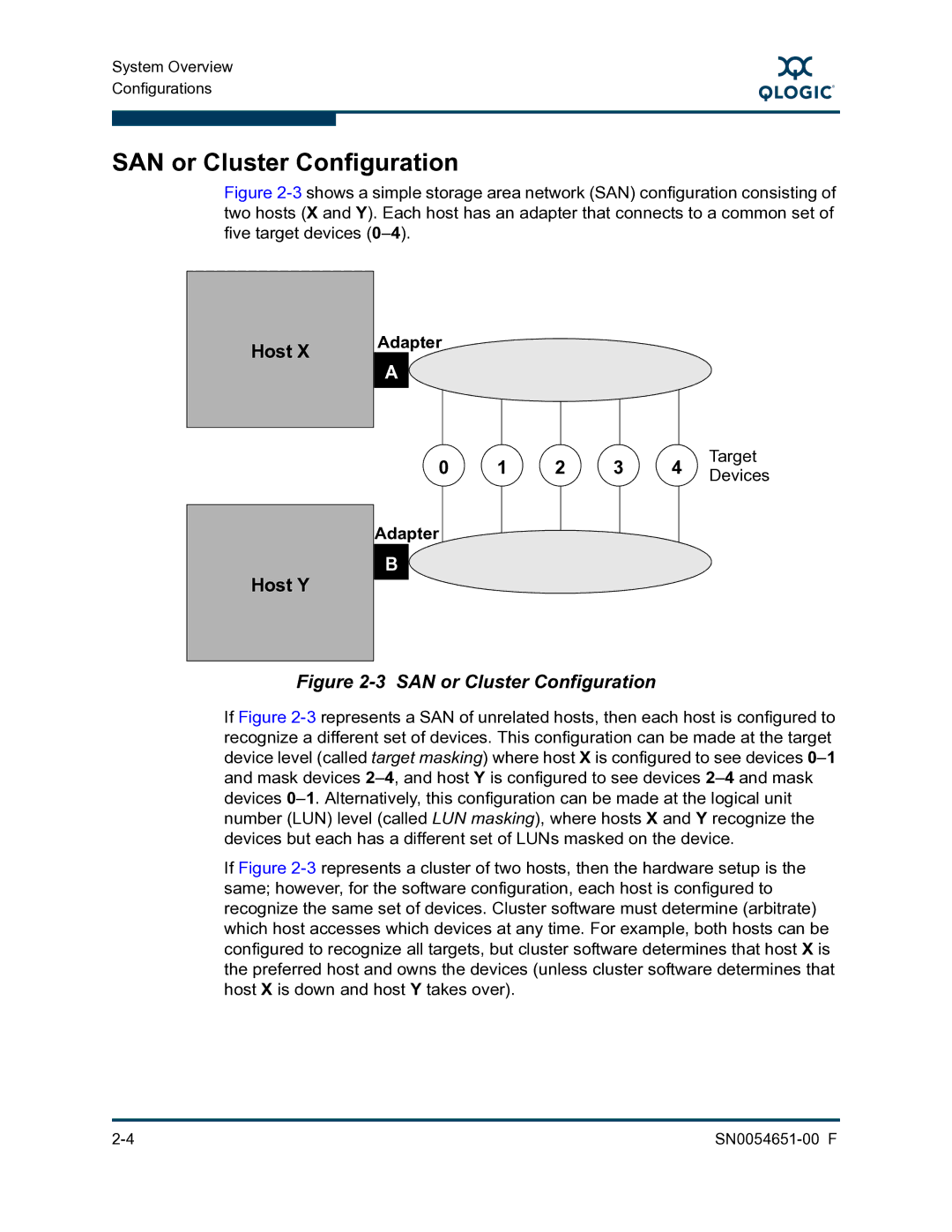
System Overview Configurations
S
SAN or Cluster Configuration
Figure 2-3 shows a simple storage area network (SAN) configuration consisting of two hosts (X and Y). Each host has an adapter that connects to a common set of five target devices (0–4).
Host X
Host Y
Adapter
A ![]()
![]()
0 | 1 | 2 | 3 | 4 | Target |
Devices |
Adapter
B ![]()
![]()
Figure 2-3 SAN or Cluster Configuration
If Figure
If Figure
